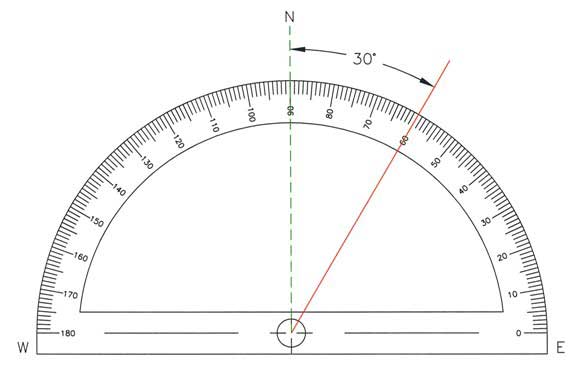A 60 N force acting at 30° east of north and a second 60 N force acting in the direction 60° east of north are concurrent forces. What is the resultant force?
What is the magnitude and direction of their equilibrant?
What is the magnitude and direction of their equilibrant?
1 Answer
Explanation:
We're asked to find the magnitude and direction of the resultant force (which we'll call
To do this, we can first find the components of the two constituent forces, using the equations
#ul(F_x = Fcostheta#
#ul(F_y = Fsintheta#
where
-
#F_x# is the#x# -component of the force -
#F_y# is the#y# -component of the force -
#F# is the magnitude of the force -
#theta# is the direction of the force (relative to the positive#x# -axis)
For the first force
-
#F_1 = 60# #"N"# -
#theta_1 = 90^"o" - 30^"o" = ul(60^"o"#
The given angle was
#30^"o"# east of north, and angles are typically measured from the positive#x# -axis toward the positive#y# -axis; i.e. from east to north.Here's what I mean by that:

The angle measured from the positive
#x# -axis is thus#60^"o"# .
Therefore, plugging in values, we have
#F_(1x) = F_1costheta_1 = (60color(white)(l)"N")cos(60^"o") = color(red)(30.0color(white)(l)"N"#
#F_(1y) = F_1sintheta_1 = (60color(white)(l)"N")sin(60^"o") = color(green)(52.0color(white)(l)"N"#
For the second force
-
#F_2 = 60# #"N"# -
#theta_2 = 90^"o" - 60^"o" = ul(30^"o")color(white)(aal)# (same reason as before)
Therefore, we have
#F_(2x) = F_2costheta_2 = (60color(white)(l)"N")cos(30^"o") = color(red)(52.0color(white)(l)"N"#
#F_(2y) = F_2sintheta_2 = (60color(white)(l)"N")sin(30^"o") = color(green)(30.0color(white)(l)"N"#
Now, let's find the sum of the respective components of these two force vectors (these will be the components of the resultant force):
#sumF_x = R_x = F_(1x) + F_(2x) = color(red)(30.0color(white)(l)"N") + color(red)(52.0color(white)(l)"N") = color(red)(ul(82.0color(white)(l)"N"#
#sumF_y = R_y = F_(1y) + F_(2y) = color(green)(52.0color(white)(l)"N") + color(green)(30.0color(white)(l)"N") = color(green)(ul(82.0color(white)(l)"N"#
The magnitude of the resultant force
#ul(R = sqrt((R_x)^2 + (R_y)^2)#
So
#R = sqrt((color(red)(82.0color(white)(l)"N"))^2 + (color(green)(82.0color(white)(l)"N"))^2) = color(blue)(ulbar(|stackrel(" ")(" "116color(white)(l)"N"" ")|)#
The direction of the resultant force is given by
#ul(tantheta = (R_y)/(R_x)#
Or
#ul(theta = arctan((R_y)/(R_x))#
So
#theta = arctan((color(green)(82.0color(white)(l)"N"))/(color(red)(82.0color(white)(l)"N"))) = color(blue)(ulbar(|stackrel(" ")(" "45^"o"" ")|)#
measured anticlockwise from the positive
